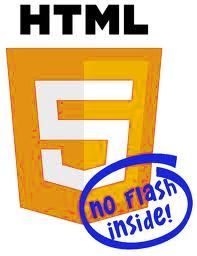If you want an expensive website that is slow to load, bad for your SEO ranking, costly to maintain, crashes browsers, drains battery life, invisibly to most viewers and annoys those who actually can see it, then sure — go ahead and use Flash.
As a website designer and developer, Flash presents so many issues for my clients that I refuse to work with it anymore. A quick Google search for the term “Flash sucks” and it’s easy to see that it’s not just designers; most users hate it too.
Flash was created during the PC era – for PCs and mice. It was a successful business for Adobe and it was fun while it lasted, but the mobile era now is about low power devices, touch interfaces and open web standards – all areas where Flash falls short.
Why Flash Sucks
• Slow loading — It’s simple. Nobody wants to be annoyed by having to wait forever for some fancy doodad to load — if it even works at all. Not only does it load slowly, it doesn’t scale, and it’s cumbersome. It might seem like a great idea to add a 2-minute long introduction video to your site to demonstrate to your audience how credible/clever/current your business is. But don’t do it. 80% of your visitors will close the browser tab before your intro finishes because they don’t care. Seconds count.
• Poor visibility — Most smart phone and tablet users can’t see it. Mobile devices like Blackberries, iPads and iPhones won’t display your website at all. No matter how creative and clever your Flash site is,  your message isn’t getting to a rather large percentage of possible viewers. By the way, Apple didn’t include it in the iPad/iPhone primarily because it would have drained the battery life on both devices.
your message isn’t getting to a rather large percentage of possible viewers. By the way, Apple didn’t include it in the iPad/iPhone primarily because it would have drained the battery life on both devices.
• Mouse dependent — Another reason Apple elected not to use Flash in their mobile devices is that Flash does not play well with touchscreens. In fact, not at all. Current Flash websites can never be made work well on any touchscreen device, and this cannot be solved by Apple, Adobe, or magical new hardware. That’s not because of slow mobile performance, battery drain or crashes. It’s because of the hover or mouse-over problem. A finger is not a mouse, and Flash websites are designed to require a mouse pointer (and keyboard) in fundamental ways. Someday that may change, and every Flash website could be redesigned with touch-friendly Flash. But that doesn’t make Flash websites work now or any time in the near future.
• Bad for SEO — Google can’t crawl any information that you put into Flash. You can have your entire site in Flash but none of that information will be accessible to Google and thus, the internet. In order to rank well on Google, Google needs to know what your website is about. One of the major ways it knows is through the text on your website. With Flash websites, Google can’t see the text content. Google just sees Flash as an image, not text. So, with Flash, Google has no clue what your website is about, and there goes your SEO ranking … *poof*
• Costly — Since Flash websites are made up of graphics, if you want to make a change in the text or content of your website it’s a real hassle. And usually an expensive one. The changes first need to be made to the original source files and then the Flash files your website uses need to be re-created. It is not something you can just learn to do on your own unless you want to spend a lot of time, effort and money doing so. Flash software is not cheap and it is not easy to learn. So that means, every time you require a change to your website, it will cost you money to hire a Flash developer – usually $50-$100 per hour of work.
Which may be moot as Adobe has announced it will no longer be developing Flash for mobile devices:
I suppose, there are some exceptions, of course — those websites whose content is about creative things such as photography, art or music, where Flash can be way to present the site. But even then, Flash comes with so many limitations, I just can’t recommend that any of my clients consider using it.

